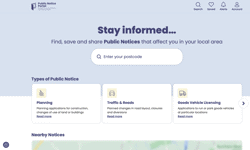Back in the Year 16 B.I. (Before Internet), I was a young journalist newly apprenticed to a hard-driving newsletter entrepreneur who would become more influential than anyone else in shaping my beliefs about how niche publishing works. One day, I proposed a few modest colour and typesetting changes to dress up my newsletter a bit. My mentor grinned knowingly. “If the content is good, Dan, you can print it on toilet paper and it won’t matter.” Today, my long-held conviction that content matters most has been replaced by the belief that something else matters as much or more.
There is no disputing the importance of design’s role in delivering content through web portals, tablets and mobile devices. Design in the age of simply formatted print newsletters was of little consequence. In today’s world it is monumental. Debates now focus on which designs work better, not on whether design is worthwhile.
But this article isn’t intended to weigh in on aesthetic questions of colour, texture, balance, the use of space, or even which font and what kind of line works best. Important as these matters are, running deeper below them is a far more consequential design question, and it falls to the senior leaders to answer it. It is this: What is our guiding design principle, or core value?
Answer this and all the other tactical questions resolve more easily and what emerges is an online brand presence that drives financial results.
Your team of content people, web designers and developers, must be guided by a light that transcends aesthetics, mechanics and the latest release of HTML and CSS. To me, coming from a leadership perspective, another way to pose the question is: What is our design ethos?
In music composition, for example, one could say the design ethos is to express in sound what is ineffable about human nature. The works of Beethoven come to mind. In architecture, the design ethos is to balance form and function. Frank Lloyd Wright’s masterpieces come to mind. In online development and design, what should be held in the hearts of those envisioning and building? What is your online design ethos?
To that I would first offer a truism, just to dispense with it. Whatever your developers and designers create should work on multiple devices. In their parlance, it’s called responsive web design. But you’re not reading this to learn the obvious, and I’m quite sure responsive design, albeit a fine principle, is not the answer to the fundamental question.
The matter of ethos invites us to go deeper. So let’s go.
Retention: print vs digital
To start our journey, I offer this anecdote…
In September, just four months ago, American media commentator Jack Shafer announced in Slate.com that after a year of subscribing to the New York Times online, he reverted to home delivery of the newspaper. He liked the Grey Lady’s “excellent” website, especially its convenience, but said, “I failed to notice many worthy stories; I also found I couldn’t recall much of what I’d read.” Shafer is not alone. In fact an Oregon University study revealed that subscribers to the New York Times print edition retained more about what they’d read than their online counterparts.
How to explain this?
Websites and their offspring, marvellous as iPods, BlackBerrys, Droids and tablets truly are, have given neuroscience something new to study and so far the research findings point to a fast-spreading pandemic of distractedness. It is the cognitive price we are paying for the wondrous screen that greets us in the morning and tucks us in at night.
For me, it’s sobering to acknowledge that publishing’s future depends on readers whose brains can focus on and absorb content, and yet the way we deliver it electronically may be undoing the very function we depend on them having in the first place. This is the publisher’s paradox. I say sobering, but I also feel optimistic and excited by the potential role design can, and must, play in reconciling this dilemma.
All in the mind
Eric Kandel is not a name familiar to most of us, but in the neurosciences, mention of his name brings instant recognition and applause. The biologist won the Nobel Prize in 2000 for research three decades earlier using sea slugs to uncover how synapses work, which lead to today’s understanding of how malleable the human mind is and how it processes and banks information. The relevance to web design is easy to see. Here’s Kandel: “For a memory to exist, the incoming information must be thoroughly and deeply processed.” For this to happen, the new information has to attach itself “meaningfully and systematically” to what’s already in storage. Otherwise it vanishes in the flash of the few seconds it takes for a neuron to lose its charge.
Throughout the history of print media, the deciding factor in the memory equation has been content quality, but let us not snub the elegant and simple design of the book, the newsletter and many newspapers and magazines that made this so. Design deserves its due. And now, in the electronic media world, it deserves and has earned its rightful place as the deciding factor in whether customers remember our content.
Do not disturb
To appreciate the vital importance of online design, it helps to consider why, as my old mentor used to say, “The easiest thing in the world not to do is read.” The explanation is anthropological, naturally, and a little worn out from overuse as a general theory of human behaviour. But it makes sense. Our wetware is the product of hundreds of thousands of years of sizing up threats in our environment. Early man was too vigilant about not becoming a meal himself to engage in the luxury of prolonged concentration, a skill it turns out that was only recently acquired in the evolutionary scheme of things.
Vaughn Bell, a King’s College research psychologist, writes that, “The ability to focus on a single task, relatively uninterrupted [is] a strange anomaly in the history of our psychological development.”
Without the invention of the book, Homo sapiens might never have learned to focus long and deeply on written ideas, much less to gain pleasure from doing so. Without the invention of the internet… well, you see where this is headed, right?
Dr Bell, above, is quoted along with Eric Kandel in one of the more illuminating books on the topic of what the internet may be doing to our brains. It’s called, The Shallows, by Nicholas Carr. Whereas Jakob Nielsen and Steve Krug gave us the definitive technical manuals for online design, Carr, who set out to write the cautionary internet tale, may have inadvertently produced the source of inspiration for our online design ethos.
In The Shallows, on page 64 to be precise, is where I discovered what is true for me about online design. It is on this page Carr recruits the great poet TS Eliot to describe the mental, if not spiritual place, readers must enter in order to focus. In Eliot’s Four Quartets, he calls this place, “the still point of the turning world”. Do you remember the last time you were so absorbed by a piece of writing you found yourself there, in that lovely, transcendent, still point of the turning world?
When online designers, developers and content producers adopt the “still point” as their ethos, they will succeed in building for customers that which observes and respects the requirement of our minds to “meaningfully and systematically” process.
The reward of the still-point ethos of design is creative focus and economic results. The endgame is always new subscriptions, higher renewals, more attendees, boosts in click-throughs. Whenever I encourage designers to build with the still point in mind, something magical happens. Suddenly they are freed from convention. All sorts of surprising ideas begin to flow, some of them retro, others progressive - all of them challenging the norm. Examples: search algorithms that keep the relevant results to half a page; content that always opens in its own window to cut down on the distractions of navigation choices, video-clips and adverts; articles that do not contain in-context links, so readers stay put and read; PDF download as the primary choice, so people can print and really read long form content.
If you find yourself judging these ideas, resist the temptation. For now, introduce the still point to your team. Challenge them to brainstorm. Hold the judgment and go for volume of ideas. See what comes up. And then evaluate and pick the best ones. I guarantee some breakthroughs that will mean money.
So, as you may have guessed, I have no rules to offer about search-box placement, or video run-times, or pop-up timing. I have no results to offer from the latest eye-tracking study or 10 tips on navigation. Even if I did, they’ll soon be outdated. My goodness, it won’t be long before video is streamed to our contact lenses, where we will also be able to read our email and Twitter posts. The still point, however, is an enduring tenet worthy of being held as the ethos of online design.
I’ve visited websites, and so have you, whose designers were inspired and guided by nothing at all, and I didn’t stay for very long, did you? It’s not their fault. We look to leaders to establish the guiding principle. What is yours? Perhaps in poetry lies the answer.










